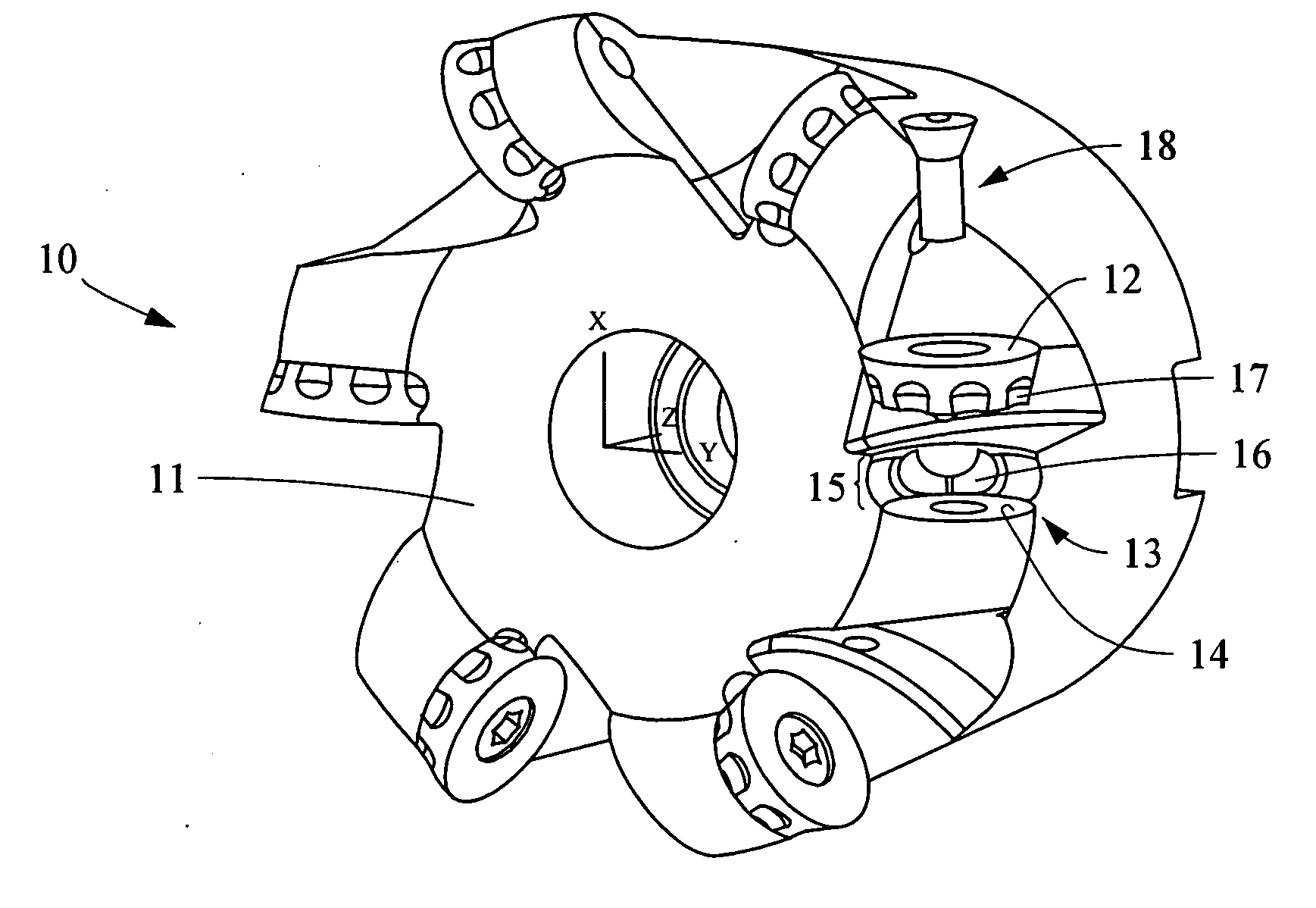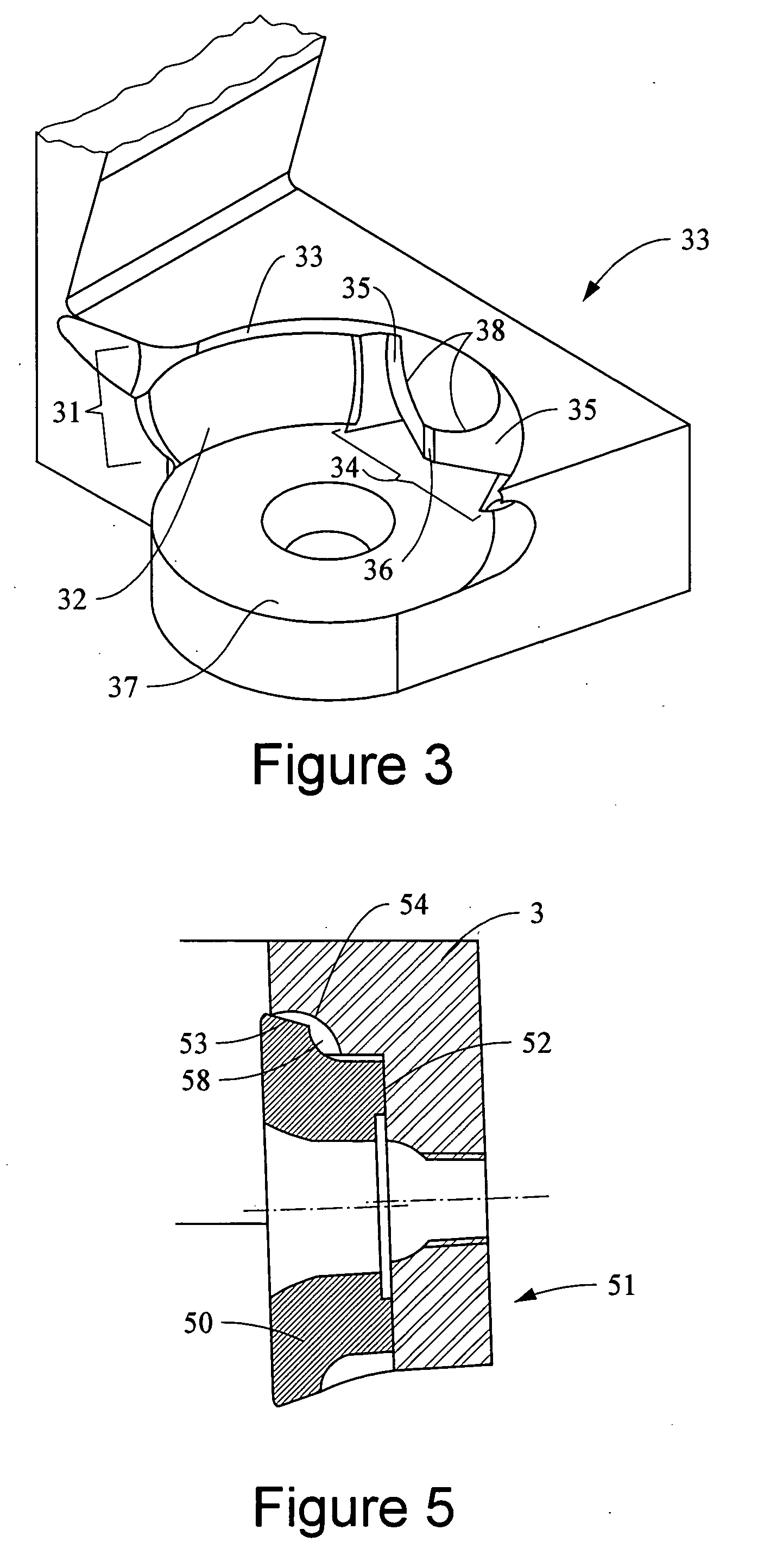Antirotation tool holder and cutting insert
a tool holder and anti-rotation technology, applied in the field of material cutting tools, can solve the problems of reducing the number of potential applications of carbide tools, requiring replacement of carbide inserts with coated surfaces, and reducing the life of inserts in machining operations,
- Summary
- Abstract
- Description
- Claims
- Application Information
AI Technical Summary
Benefits of technology
Problems solved by technology
Method used
Image
Examples
Embodiment Construction
[0027] Embodiments of the tool holder includes at least one insert pocket. Each insert pocket comprises a bottom surface and a side surface, and at least one antirotation stop protruding from the bottom surface, wherein the antirotation stop comprises at least two substantially planar surfaces. The tool holder may be used for any machining operation such as, but not limited to, milling, turning, boring, planing, shaping, and reaming.
[0028] An embodiment of the tool holder may be a milling cutter tool 10 for an indexable cutting insert, such as shown in FIG. 1. The embodiment of the tool holder in FIG. 1 includes a tool body 11 having six (6) pockets 13 for receiving six (6) indexable round shaped cutting inserts 12. The round shaped cutting inserts 12 may be secured in pockets 13. The pocket 13 of this embodiment of the tool holder comprises a bottom surface 14 and a side wall 15. An antirotation stop 16 protrudes from the side wall 15. The antirotation stop 16 at least partially e...
PUM
| Property | Measurement | Unit |
|---|---|---|
| shape | aaaaa | aaaaa |
| cylindrical shape | aaaaa | aaaaa |
| rotation | aaaaa | aaaaa |
Abstract
Description
Claims
Application Information
 Login to View More
Login to View More - R&D
- Intellectual Property
- Life Sciences
- Materials
- Tech Scout
- Unparalleled Data Quality
- Higher Quality Content
- 60% Fewer Hallucinations
Browse by: Latest US Patents, China's latest patents, Technical Efficacy Thesaurus, Application Domain, Technology Topic, Popular Technical Reports.
© 2025 PatSnap. All rights reserved.Legal|Privacy policy|Modern Slavery Act Transparency Statement|Sitemap|About US| Contact US: help@patsnap.com



